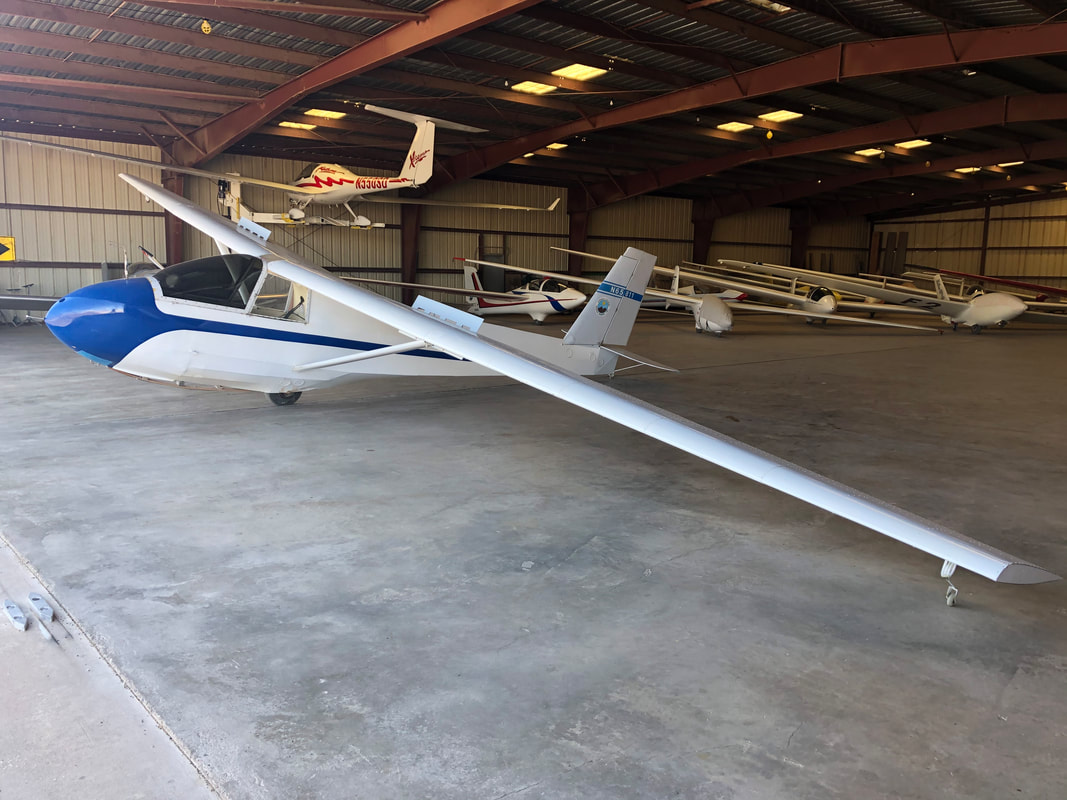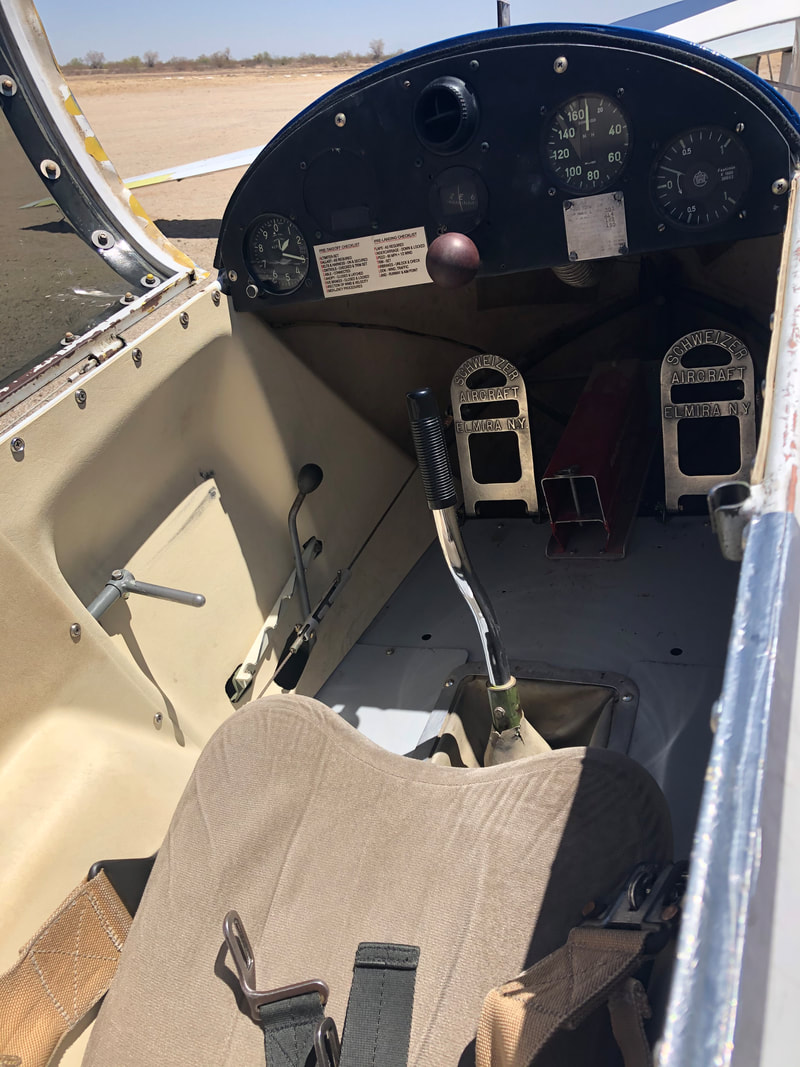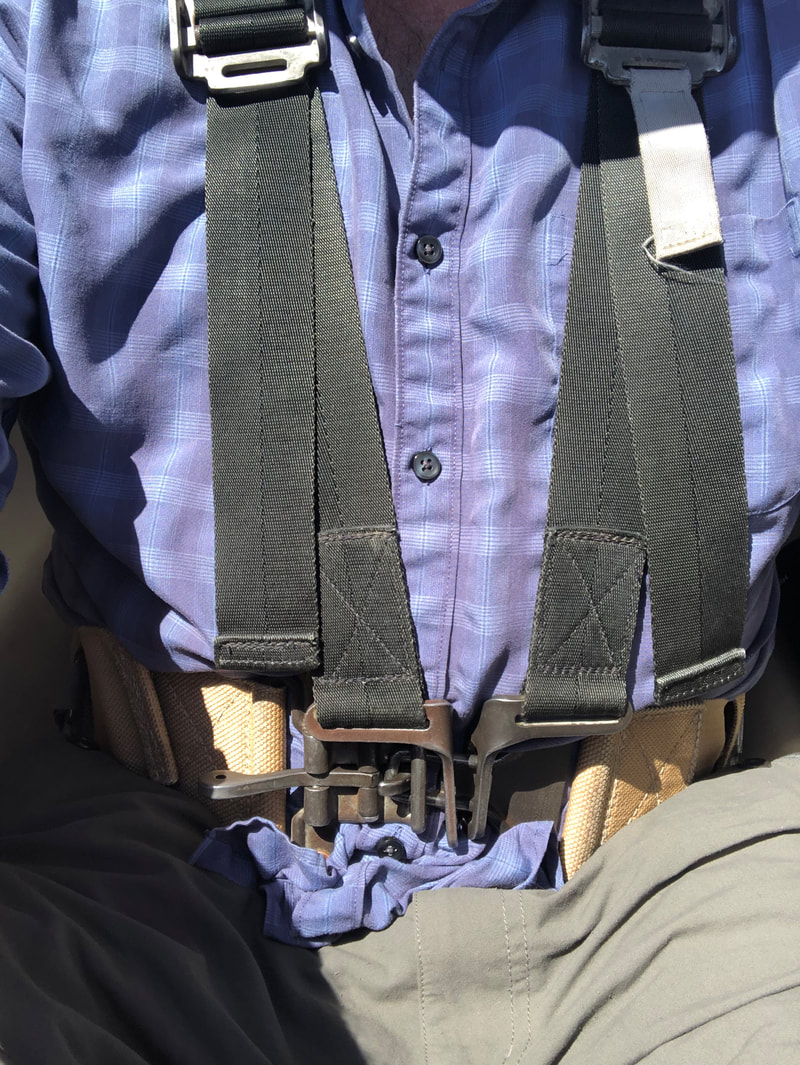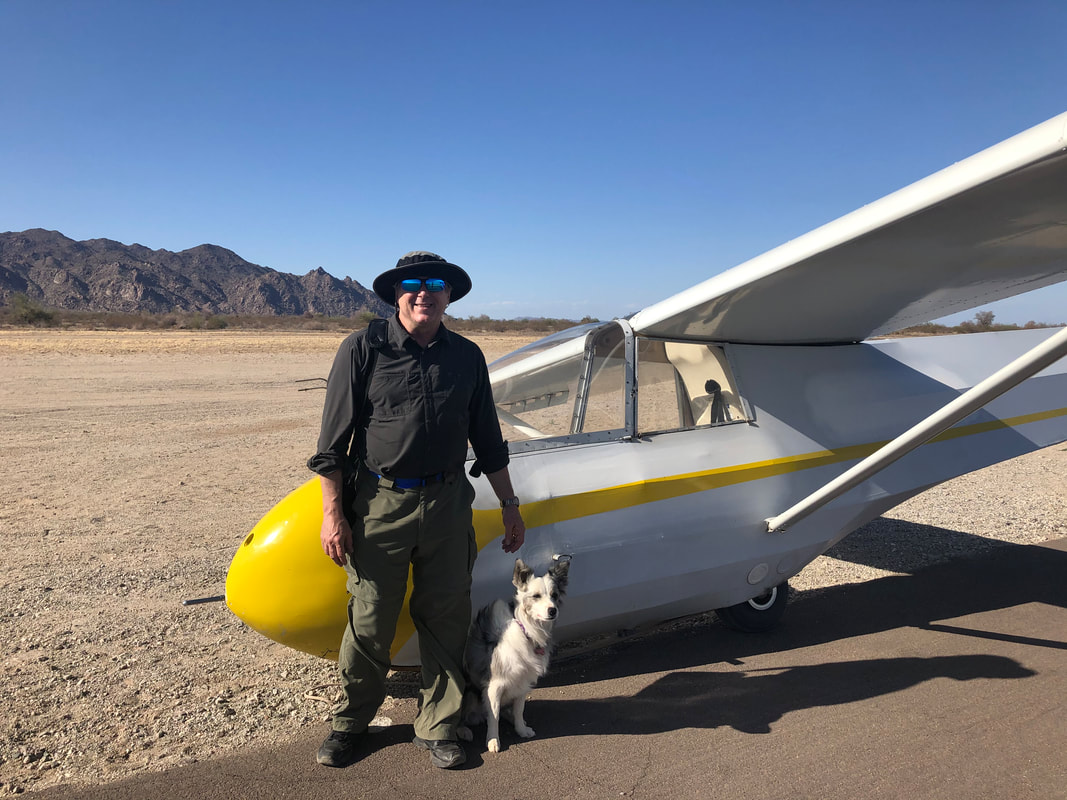I didn’t have the road to entirely to myself, but with 4 lanes of light traffic on one of the newest and smoothest highways in the Phoenix metro area…close enough.
Riding south on AZ-202 from its junction with I-10 west of Phoenix, with a panoramic view of South Mountain and the Sierra Estrella, the temperature in the mid-70s, I was greatly enjoying what was only my second ride on Therese in more than a year.
Our first ride had been the previous night. To my mild surprise and considerable delight, Therese started without reluctance despite the nearly 14-month-old “gasoline” in her tank. To make room for a dose of fresh fuel I took a ride out to the east valley.
I turned around at Falcon Field, where I worked back in the '80s. More recently – specifically January 2, 2021 – the simulacrum of Falcon Field is where I’d accomplished my first reasonably decent simulated glider landing in X-Plane 11.
This morning I was on my way to the real thing.
*
Arriving at Estrella Sailport, in the office of Arizona Soaring, Inc., I met Operations Manager Shad Coulson, with whom I’d been trading emails since March when I decided to make a serious effort to earn my pilot’s wings – a dream unrealized since a childhood spent steeped in science fiction, model airplanes, and real time Project Apollo fandom.
The meeting was a bit stilted due to COVID mask protocol; the staff of Arizona Soaring had all received at least the first vaccination, but until everyone was two weeks past the second shot masks would be required inside – including inside 2-place gliders.
In the classroom, using a generic foam model airplane, Shad confirmed my basic understanding of aerodynamics and aircraft control surfaces. With a handheld whiteboard on which he sketched a glider’s instrument panel he then introduced me to the single most important facet of piloting a glider: speed control. This is properly maintained not by staring at the airspeed indicator but by using pitch control (i.e., the elevator) to keep the horizon aligned with reference points on the glider. In the ship I’d be flying, the Schweizer 2-33A, these points are positions along the length of the “pitot tube”, a thin metal pipe extending vertically from the nose cowling directly in front of the pilot. The specific points for a given speed are different for every pilot, as they depend on the height of the pilot’s eye above the instrument panel.
These brief lessons complete, it was time to fly.
We walked out to the hangar where Shad stepped me through the preflight inspection checklist for the SGS 2-33A.
That’s an oversimplification, of course. Yet launching a glider involves a pilot doing all of that, while at the end of a long rope attached to the tail of his airplane a second pilot has to control a second airplane, and control isn’t even possible until the glider is moving fast enough that the line crewman can quit running alongside holding the wingtip to keep the ship level (or not quite level, if there’s a crosswind). As the formation picks up speed and the glider becomes controllable its pilot must know not only how to fly it but how to not do anything that will crash the tow plane.
Landing a glider, by contrast, is arguably less complicated than landing a powered plane; there are certainly fewer options available to the pilot. But you’ve only got one shot, so it has to be done right.
There ain’t no pouring on the power, going around, and trying again.
We flew three times. It was pretty bumpy but I’d prepared myself for that possibility with a dose of all-day, non-drowsy-formula Dramamine – and if that didn’t work, a plastic bag in my pocket. Once or twice I wondered if I might be starting to feel a bit queasy, but it never got worse than that.
The most severe turbulence was near the ground and while still on tow, where I certainly would have bounced right out of my seat if I hadn’t been securely buckled in. On the second and third flights Shad got us far above all that, soaring upwards in thermals (rising columns of warm air) to as high as 8700 feet AGL (Above Ground Level), after releasing from the tow at 4500.
He continued to provide instruction during the flights and gave me plenty of time with full control of the glider. I began to develop the fundamental skills of pitch/speed control and “coordinated turns”, which means using the rudder pedals in correct timing and proportion to how the stick is used to bank the wings.
At the top of the thermals I relaxed and just enjoyed looking out over the desert scenery far below; the view from a height is what I like most about flying.
And this particular view was actually quite familiar; X-Plane does an excellent job of rendering the terrain, from the grand magnificence of the Sierra Estrella range and other smaller ridges like Sevenmile Mountain, down to dry washes and hiking trails and gritty details of the dirt landing strip that parallels the paved runway, which is only used for takeoff. Thanks to the simulator I’d “flown” on a daily basis ever since the new year (for way more about this, please see Smoking Wreckage and Champagne), I knew exactly where I was the entire time, no matter which way Shad or I turned the ship.
The simulator helped me with real life flying skills as well. Of course, there’s a lot of difference between a sim and the real thing, most notably the lack of feedback. My system’s joysticks can’t mimic the forces of the airstream against the control surfaces, which in turn act against the stick and rudder pedals themselves. At least some degree of dissonance can be ascribed to the fact I was in real life flying a heavy, relatively low-performance trainer instead of the much higher performance ASK 21 provisioned with the simulator.
I’d had some concern the simulator might teach me bad habits, and it did to a degree, but it was clear from the start the sim was a net benefit – especially in terms of developing the muscle memory needed for rudder pedals.
After our last flight Shad told me I “flew well.”
That was all I needed to consider my first day of training a complete success, as my goals had been simple:
- Demonstrate at least a degree of aptitude for flying.
- Keep the contents of my stomach inside my stomach.
As an unexpected bonus I became a new friend of two dogs.
One is Ranger, the 7-month-old standard poodle puppy whose human is Jason Stephens, 5-time U.S. aerobatic champion and president of Arizona Soaring, Inc. The video Spin Training is a pretty cool CineMusicalAeroEpic one of Jason’s aerobatic students made.
The other dog I befriended is Shad’s border collie, Zona.




 RSS Feed
RSS Feed